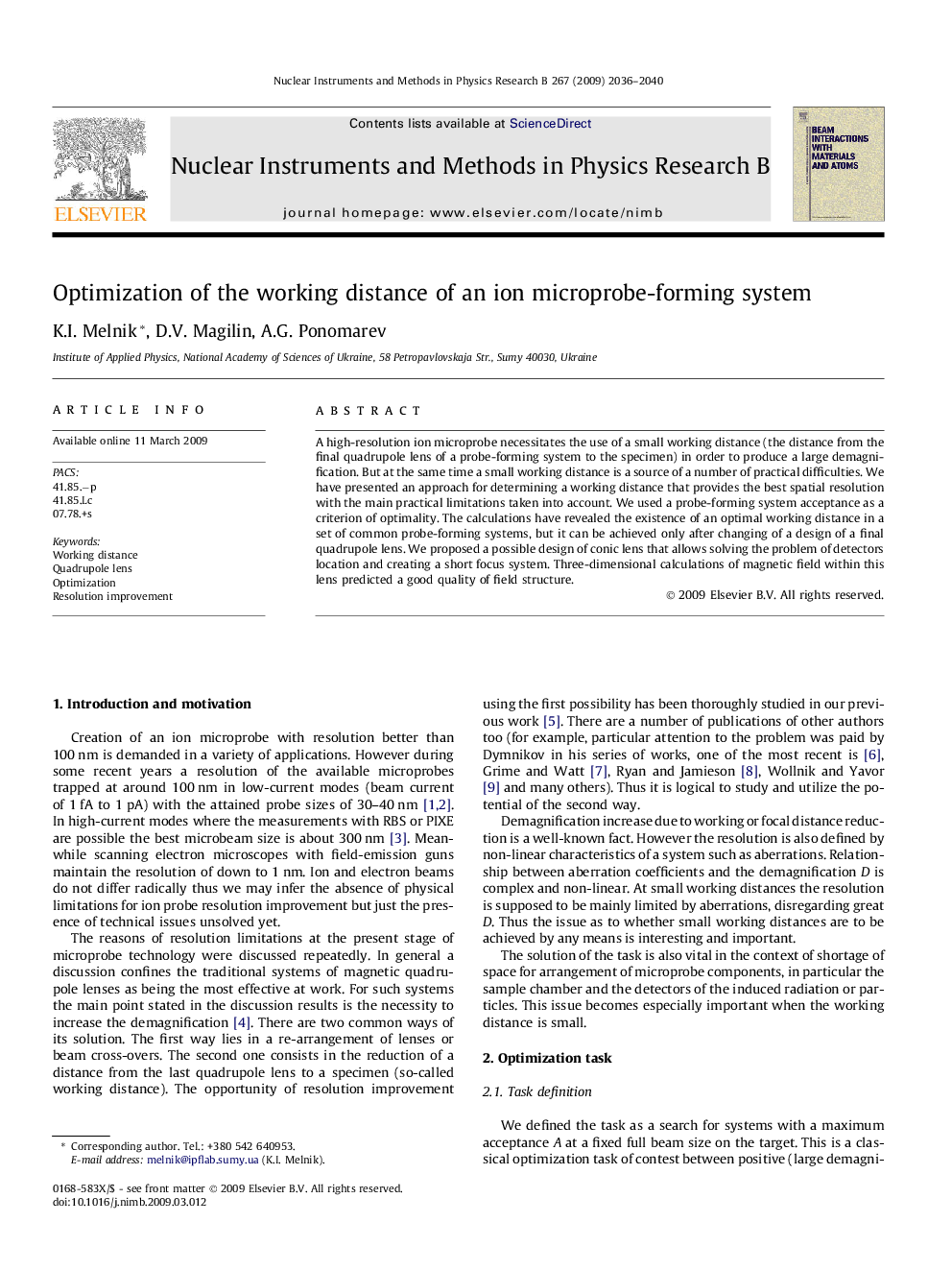| Article ID | Journal | Published Year | Pages | File Type |
|---|---|---|---|---|
| 1687223 | Nuclear Instruments and Methods in Physics Research Section B: Beam Interactions with Materials and Atoms | 2009 | 5 Pages |
Abstract
A high-resolution ion microprobe necessitates the use of a small working distance (the distance from the final quadrupole lens of a probe-forming system to the specimen) in order to produce a large demagnification. But at the same time a small working distance is a source of a number of practical difficulties. We have presented an approach for determining a working distance that provides the best spatial resolution with the main practical limitations taken into account. We used a probe-forming system acceptance as a criterion of optimality. The calculations have revealed the existence of an optimal working distance in a set of common probe-forming systems, but it can be achieved only after changing of a design of a final quadrupole lens. We proposed a possible design of conic lens that allows solving the problem of detectors location and creating a short focus system. Three-dimensional calculations of magnetic field within this lens predicted a good quality of field structure.
Related Topics
Physical Sciences and Engineering
Materials Science
Surfaces, Coatings and Films
Authors
K.I. Melnik, D.V. Magilin, A.G. Ponomarev,
